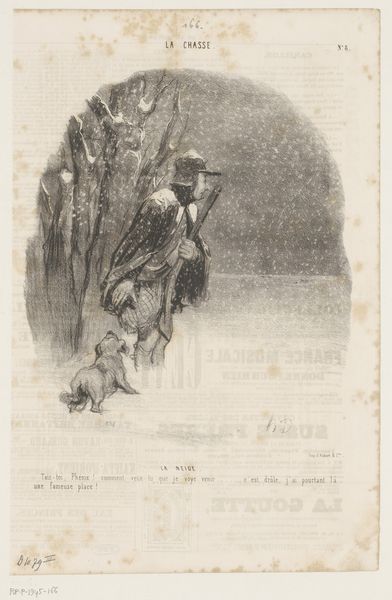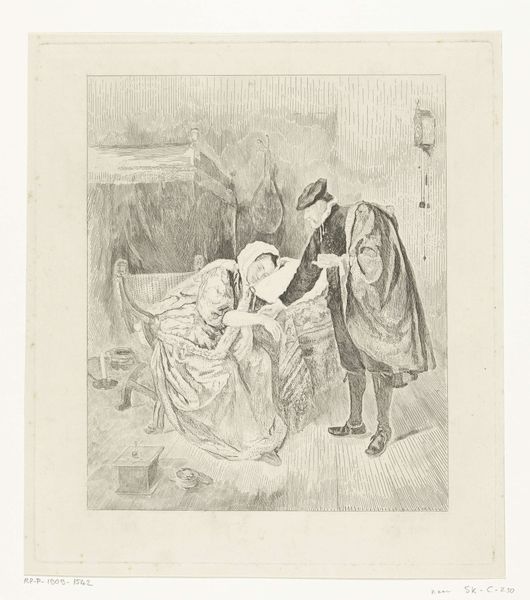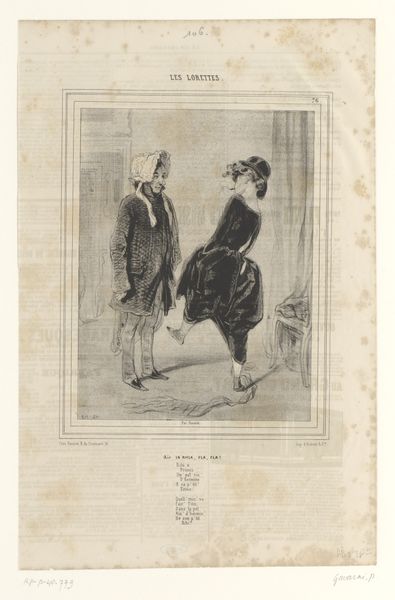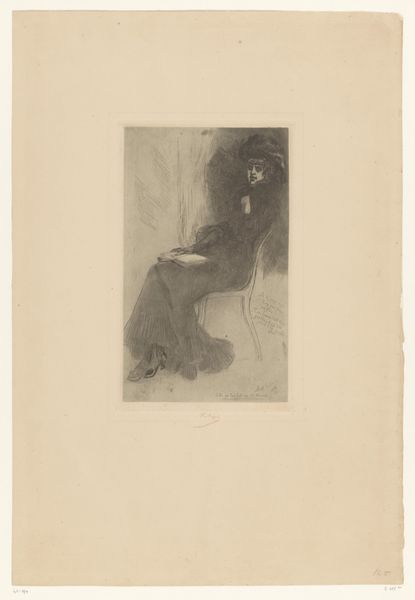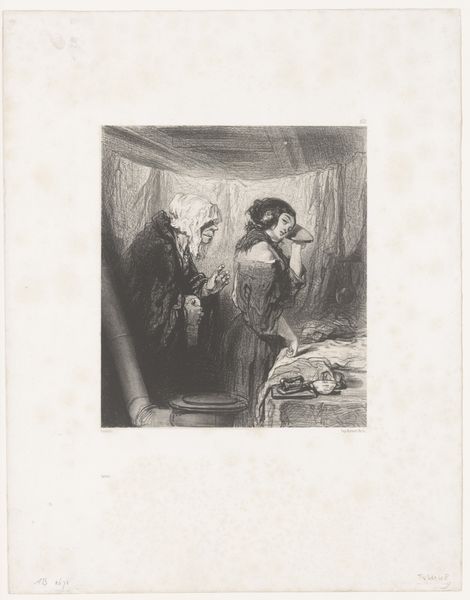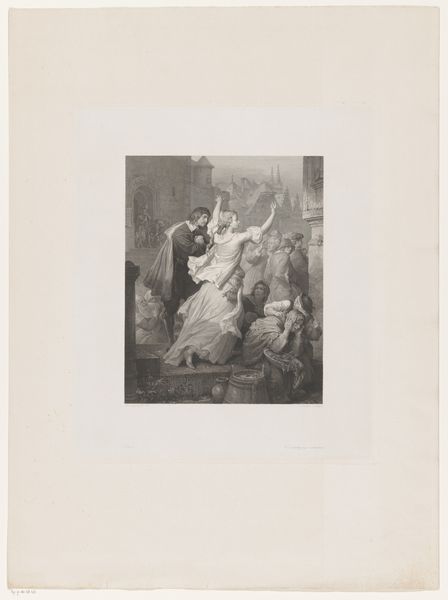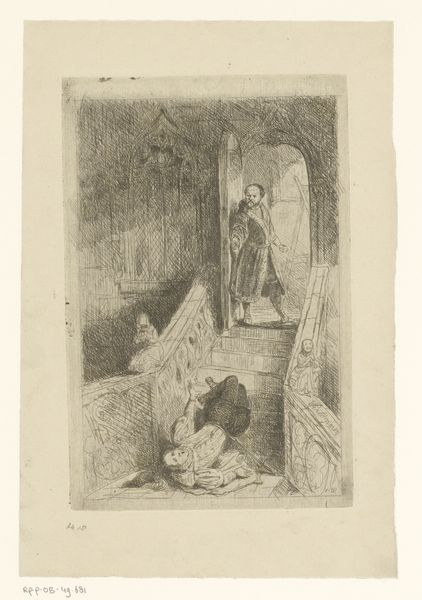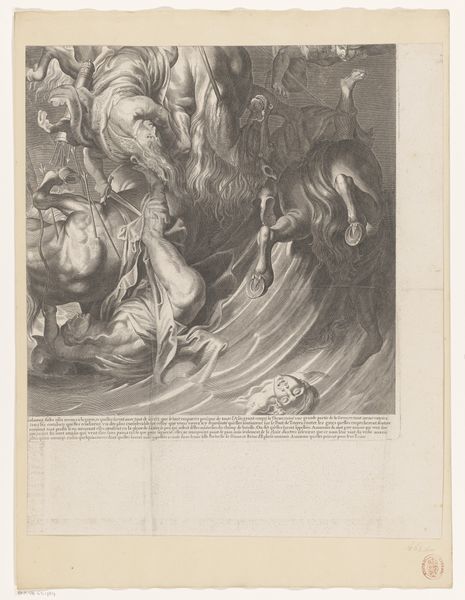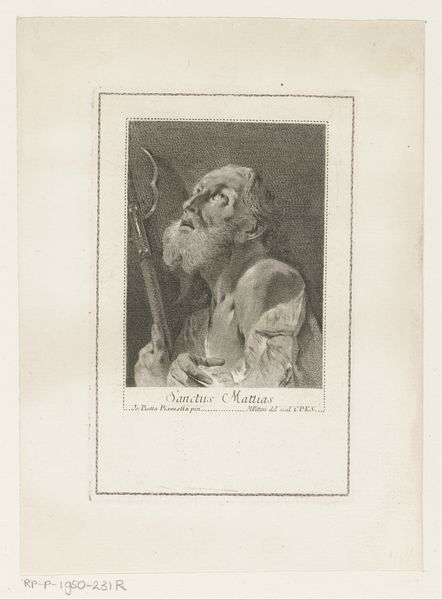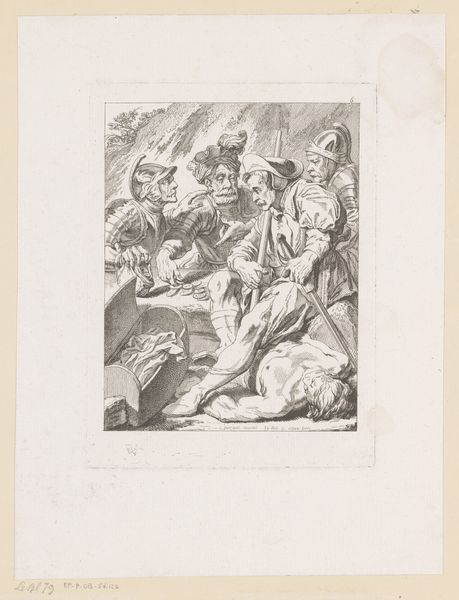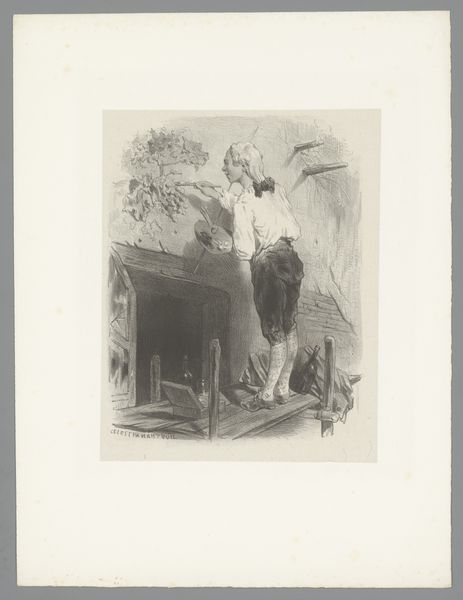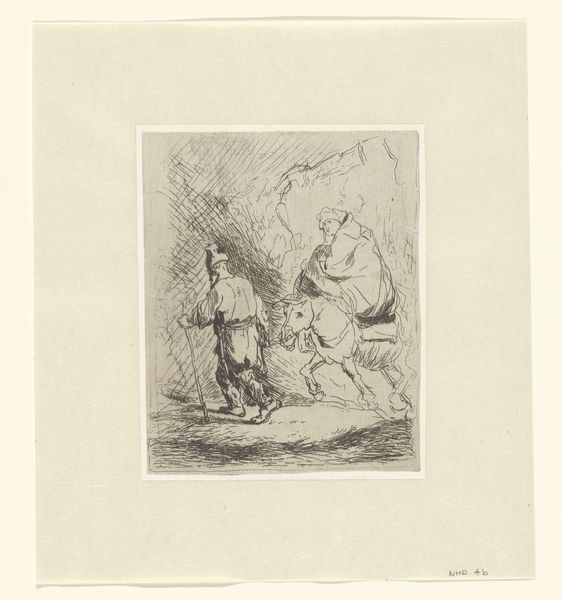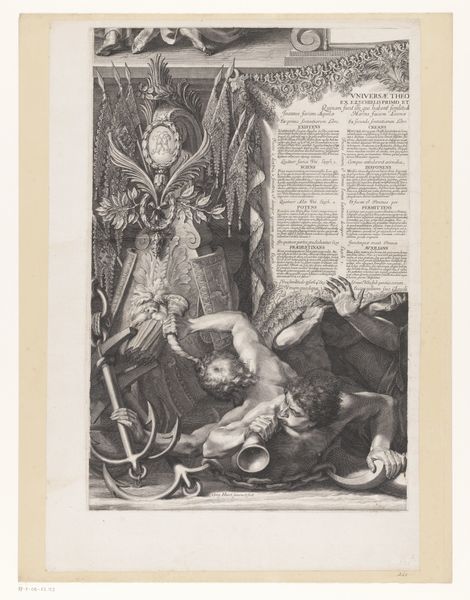
lithograph, print, engraving
#
portrait
#
lithograph
# print
#
romanticism
#
genre-painting
#
engraving
Dimensions: height 362 mm, width 234 mm
Copyright: Rijks Museum: Open Domain
Editor: So, here we have Paul Gavarni's "Two Young Women in Dressing Gowns in a Bedroom," a lithograph from 1843 at the Rijksmuseum. It’s quite a dark print, almost gloomy, depicting two women in what looks like a private, perhaps intimate, moment. What can you tell me about this scene in a historical context? Curator: Considering Gavarni's wider production and the period's social climate, this print might reflect the ambiguous role of women in 19th-century Parisian society. The "Lorettes," a term seen at the top of the work, occupied a liminal social space, a somewhat public, yet marginalized existence. What feelings does that ambiguity evoke when you view the print? Editor: It definitely gives a feeling of… vulnerability, but also a hint of defiance, almost like they are both resigned to a life society is not celebrating. They’re indoors, but something seems very public about them. Curator: Exactly. That contradiction is key. Prints like these were often circulated widely through publications, bringing private moments into public consumption. This act both immortalizes and exploits their subject's ambiguous societal position. Do you see this as critical commentary or exploitation by Gavarni? Editor: It’s difficult to tell! It walks the line between a record and a…judgement? Maybe it’s impossible to completely extract the judgment. But there are no ideal conditions from which the artwork came! Curator: Precisely. And it's crucial to examine not just what is represented, but *how*. The medium of lithography itself – its capacity for mass production and dissemination – played a vital role in constructing and perpetuating perceptions about women, class, and social status. Editor: This discussion really changed how I see it now! It's not just a scene, but a document, almost. I thought it was a melancholy sketch; it’s so much more layered! Curator: I agree. Understanding the print's position within the broader socio-political landscape encourages us to confront the power dynamics inherent in its creation and circulation. It certainly reminds us about the public role of art!
Comments
No comments
Be the first to comment and join the conversation on the ultimate creative platform.
